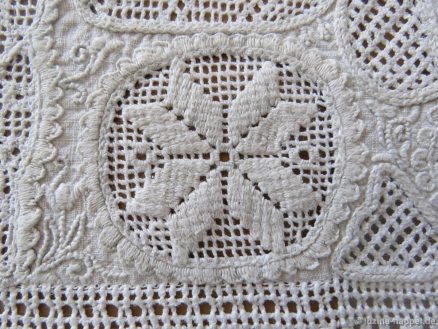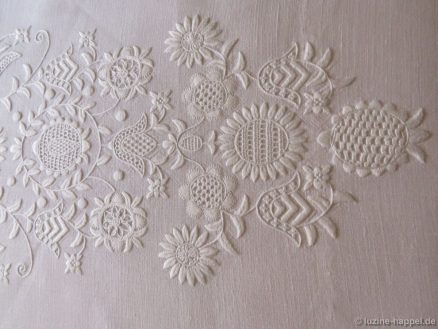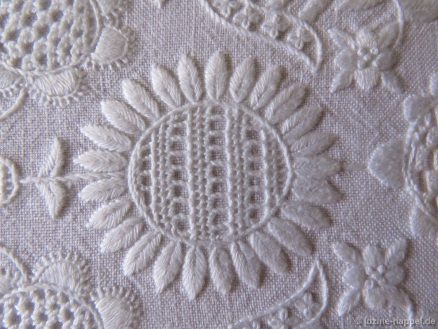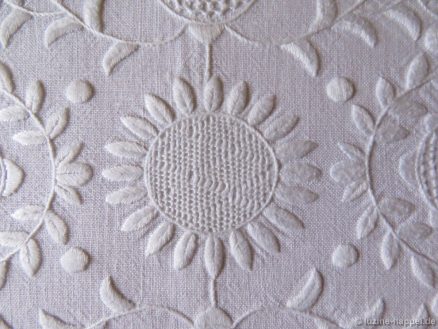The Schwalm region, from which traditional Schwalm embroidery came, was rural and Protestant. This history influenced the symbolism of the motifs used in the region’s famous embroidery. Although the motifs symbolized certain values, the symbolism was incidental. Motifs were and are today mainly chosen for aesthetic and design reasons.
The main motif in Schwalm embroidery is the heart – the domicile of life and the symbol of love. Assumedly, it was originally embroidered as a vessel, from which the Tree of Life grew after being supplied with life-giving water. (The triple shoot stood for the Trinity, and the Tree of Life stood for a long life and eternity.)
Sometimes the heart, often used as a base for the triple shoot, was replaced with a basket
or a flowerpot.
The heart is closely followed by the tulip motif – the symbol of affluence. The tulip was also seen as a modified Tree of Life and, because of its three points, a symbol of the Trinity.
Other important motifs were circles. Having neither a beginning nor end, they were symbols of perfection and eternity. Suns represent the source of life-giving light and also Jesus Christ.
And the sunflower symbolizes long life.
It is said that the bird motifs represent sparrows symbolizing fertility.
Tendrils symbolically represent life cycles and stand for changes and transitions.
Leaves show growth and life.
The pomegranate – symbol of fertility, strength, and God´s blessing – was popular in early Schwalm whitework. Later simpler motifs were used to be able to integrate the now modern filling patterns. In this example, the filling pattern does not suit the pomegranate. In later Schwalm whitework, pomegranate motifs are more sporadic.
The star – symbol of God´s messenger – also has a shape that is not suitable for filling patterns. It was common to embroider stars as figural filling patterns.
Similarly, the pink – reference to Jesus Christ – was well liked in early Schwalm whitework. However, because of the difficulty to fill small detailed areas, it was eventually only used as a figural filling pattern.
The crown, a symbol for sovereignty, was forbidden to be used in private embroidery. But the Schwalm women created their own crowns. With a strong sense of aesthetics and extraordinary creativity, the Schwalm women created an impressive variety crowns. They regarded their Crowns as family emblems.










































